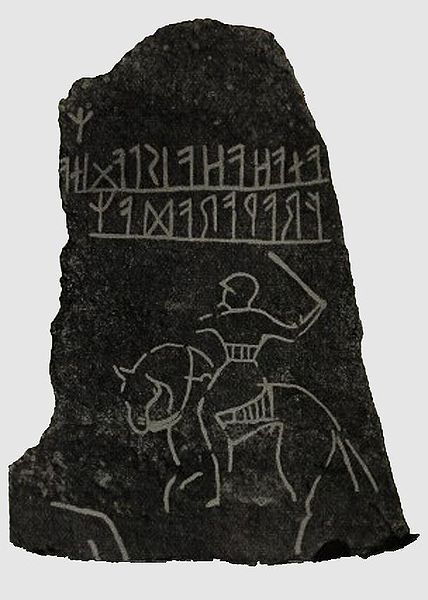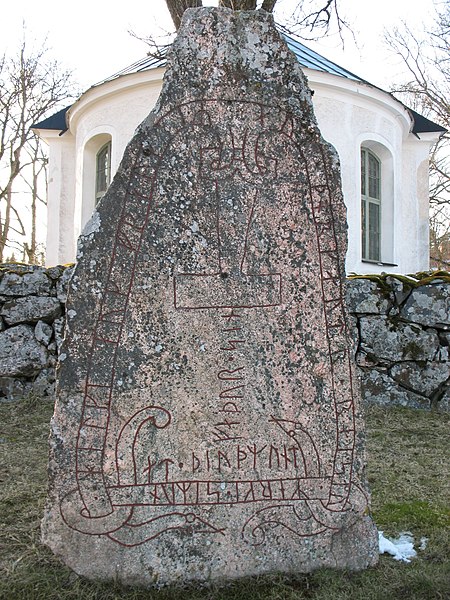The Dynna Stone is a runestone from the late Viking Age that was originally located in Gran, Norway.
Dynna stone
Detail of Dynna Stone image.
A runestone is typically a raised stone with a runic inscription, but the term can also be applied to inscriptions on boulders and on bedrock. The tradition of erecting runestones as a memorial to dead men began in the 4th century and lasted into the 12th century, but the majority of the extant runestones date from the late Viking Age. While most of these are located in Scandinavia, particularly Sweden, there are also scattered runestones in locations that were visited by Norsemen. Runestones were usually brightly coloured when erected, though this is no longer evident as the colour has worn off.
The Lingsberg Runestone, Sweden, known as U 240
An early runestone: the Möjbro Runestone from Hagby (first placed near Möjebro), Uppland, Sweden. As with other early runic inscriptions, (e.g. Kylver Stone from about 300–400 CE) this is written from right to left, while later Runestones were written from left to right.[citation needed] The text is "Frawaradaz anahaha is laginaz".
The Snoldelev stone, one of the oldest runestones in Denmark
The Stenkvista runestone in Södermanland, Sweden, shows Thor's lightning hammer instead of a cross. Only two such runestones are known.






